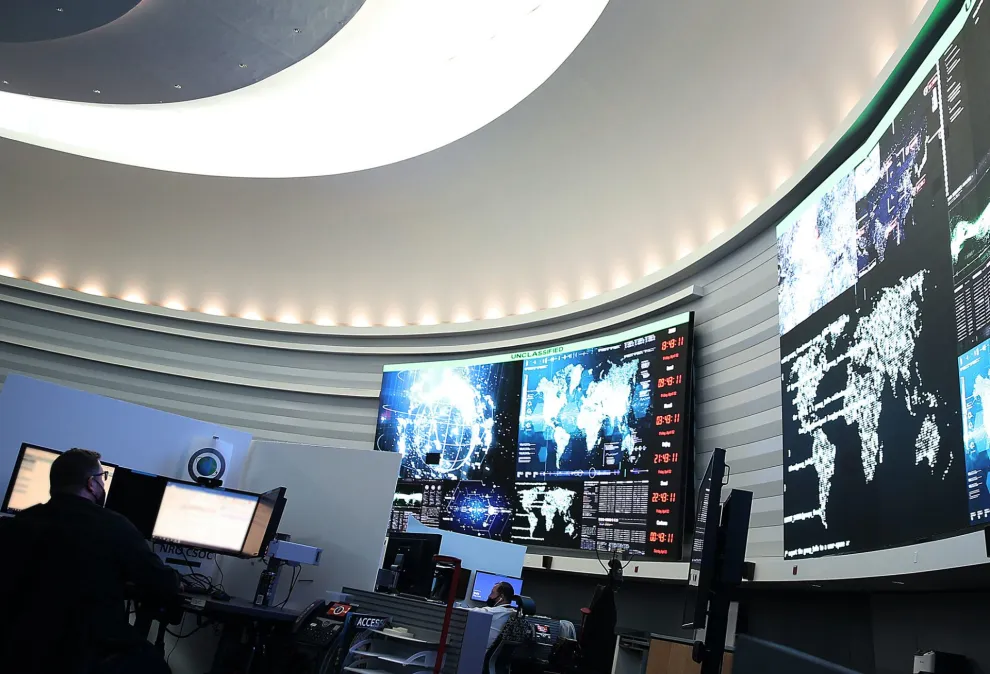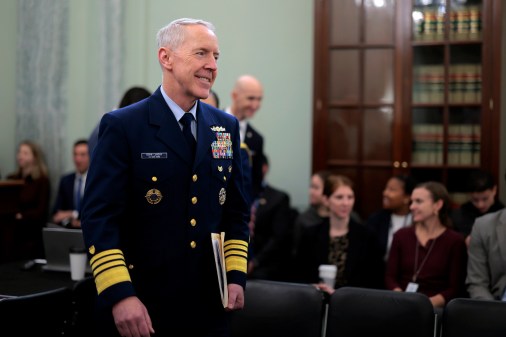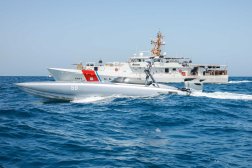Dashboard aims to give commanders increased ability to assess cyber team readiness

Industry officials are shedding more light on a system for providing critical readiness data on the state of teams at U.S. Cyber Command, which has been in operational use for the last year.
The capability is part of the Joint Cyber Command and Control (JCC2) program, which is aimed at providing improved situational awareness, battle management, and information about cyber forces’ readiness levels for operations across the globe. According to budget documents, the program provides a “congressionally directed focal point to provide integrated C2 solutions to all echelons for execution of cyberspace operations to enable and accelerate planning/collaboration between Cyber Mission Forces (CMF) and Combatant Commands,” as well as integrating with joint, coalition and interagency command-and-control to enhance multi-domain operations, reduce planning time, improve decision quality and speed — resulting in shorter kill chains.
It is a component of the Joint Cyber Warfighting Architecture (JCWA), first envisioned in 2019 as a way of getting a better handle on the capabilities, platforms and programs the command is designing. It sought to set priorities for the Department of Defense and its industry partners that are building them. It’s thought of as the command’s warfighting platform and consists of a variety of components built by each of the services on behalf of the joint cyber mission force for big data analytics and ingestion, command and control, tools and platforms to launch operations off friendly networks, among others.
JCC2 is being run by the Air Force on behalf of the joint force and Cybercom.
For an effort dubbed JCC2 NextGen, the command has opened a new contract effort that encompasses four areas: threat awareness sharing, IT operations support, battle management development, and field operations and training support.
According to Lockheed Martin, the prime contractor for the readiness effort, the company developed a system to manage cyber force readiness in support of full-spectrum cyber operations that provides commanders with visual dashboards and metrics that display in near-real time the capability and capacity of personnel, teams, equipment and infrastructure to conduct cyber ops.
That readiness application transitioned to the DOD application program management office in 2019 and is mandated for operational use per a task order in June 2023, the company said in responses to DefenseScoop.
Sources indicated this capability, as envisioned, will be an important tool allowing an unprecedented level of information and fidelity into the status of teams and individual cyber warriors.
Important for the development of the JCC2 capability was not just the ability to command forces across the globe and have insight into their locations and missions, but also the need to track things like mission alignment, how the forces are being used, who is training, who is on mission and what the various skill sets of personnel are.
For example, this level of fidelity to track forces will give commanders the ability to find the right personnel needed for a given mission, something that was not possible previous, as much of that work was done manually on paper. As a hypothetical example, if a commander has a mission and requires a set number of experts for Industrial Control Systems (ICS) and Supervisory Control and Data Acquisition (SCADA) against a particular target, they can find members that are certified for mission with ICS-SCADA expertise and analysts or linguists that pertain to the target, and assign them to that mission.
Without this data and ability to track forces, the commander has no way to make a strategic assessment of them and their availability, which is critical given recent congressional ire concerning readiness of the cyber mission force.
“When it comes to risk assessment, decision-makers need to see the whole picture,” Tish Rourke, vice president of the cyber and intelligence market segment within the Lockheed Martin Rotary and Missions Systems business area, said in a statement.
There were talks as far back as 2018 about tweaking the initial structure of the cyber mission force teams, which hadn’t been reevaluated since it was designed around 2012, in conjunction with all the teams reaching what’s known as full operational capability. Officials always said the answer was to task organize, something modeled after the Cyber National Mission Force, a sub-unified command under Cybercom made up of 39 joint teams and thought to have the DOD’s most talented cyber operators aligned in task forces organized against specific threat actors, with the core mission of defending the nation against digital threats.
In fact, Paul Nakasone, the most recent commander of Cybercom who was also a former CNMF commander, had often talked about his penchant for task forces. The current commander, Gen. Timothy Haugh, was also a former CNMF commander.
Some believe this task force structure will endure and become more widespread across other subordinate commands.
This ability for greater fidelity of readiness and team structure aims to make teams more effective given it provides commanders increased flexibility and responsiveness to the threat or requirements for a mission at any given time, according to sources.
“Delivering data in real time to Commanders enables them for the first time to be able to see themselves, count themselves, and know if the force is a more capable force,” Lockheed said. “One of the core objectives of readiness data is to inform and ensure proper and expedient mission planning in Commander’s [area of responsibility]. Mission effectiveness is significantly improved by ensuring you have the best athletes for the given mission parameters.”
Customizable dashboards are now available to commanders through the system and provide commanders and staff on a daily basis access to information needed for course-of-action development and decision-making, Lockheed said. The readiness application dashboards are utilized on a monthly and quarterly basis by service cyber component commanders to brief the Cybercom commander and deputy commander, Lockheed said.
Moreover, the company noted that commanders and their staff require data and information for joint operations decision-making. The development team demonstrated its ability to integrate with other applications within the DOD application program office, JCWA and other Defense Department components to make the readiness pictures available to commanders even more powerful.
“The Development Team and DOD application PMO have made it a priority to interconnect the Readiness application with other JCWA pillar programs to correlate various stoved piped datasets to create a common operational readiness picture. The application also has capabilities to share its comprehensive datasets to other systems,” Lockheed stated.
One such system is the Persistent Cyber Training Environment (PCTE), an online client that allows access to Cybercom’s cyber mission force from anywhere in the world for individual or collective training and mission rehearsal. While all elements of JCWA must integrate given the concept envisions it as singular platform made up of the sum of its parts, much attention has been paid to the integration with PCTE to be able to track training, which relates to overall readiness.
This integration is “extremely critical,” Mike Hudson, the deputy for the command’s exercise and training directorate, or J7, said during the annual PCTE forum in May.
“From just where I sit in the front office of the J7, being able to track how we’re training, how effectively we’re training and how that reflects in how we conduct operations is a critical component of being able to assess the readiness of our force,” he said. “If we can’t find a way to link these things, we might be off the right path on how we’re training our highly skilled operators. If we have the ability to connect, track training, track operations, track how these folks are doing in the system, it actually gives us a better reflection of whether we need to adjust individual training, whether we need to adjust collective training or whether we need to adjust some other technology, maybe how we’re doing mission rehearsal. All of those things are related.”
A spokesperson for the PCTE program office stated that while JCWA-wide integration is a priority, the focus as of late is JCC2 integration. Functionality was recently introduced that pushes user training data over to the JCC2 readiness application for more accurate readiness reporting.
Cybercom requested $96.9 million dollars for the totality of the JCC2 program for fiscal 2025, according to budget documents.
The documents note that the program office has established a continuous integration/continuous development (CI/CD) pipeline to facilitate the rapid development, integration and fielding of capabilities in order to remain responsive to evolving requirements, and that it will execute the agile development requirements provided by Cybercom, the services and stakeholders.
Lockheed noted that given the system is rooted in DevSecOps and CI/CD principles, it is “highly efficient” in delivering new software releases at the speed of need. New features and capabilities are delivered to the operational community weekly, the company said, noting that the development team engages daily with users for input and feedback.






